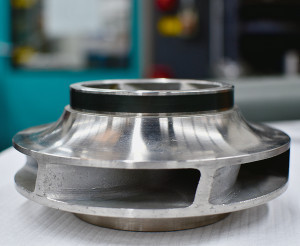The diverse world of surface finishing will once again be showcasing its entire spectrum at Surface Technology in Stuttgart from June 21 - 23. Thermal spraying has become an integral part of this. What are the advantages in direct comparison to general electroplating technology? With thermal spraying, any material can be coated. Regardless of whether the base material of the component to be coated is metal, plastic, wood or even glass. Thermal spraying always finds a way to refine the surface and provide it with the desired coating properties.
 The great advantage of thermal spraying is clearly the complete independence of the base material to be coated, as well as the almost limitless choice of coating material. This means that the customer can choose the most suitable base material for their component without having to consider the subsequent coating process. Unusual material combinations are therefore possible, such as the lightest possible 3D-printed plastic base body combined with a thermal ceramic or hard metal spray coating, combining lightness, complex geometries and wear protection through the spray coating. The use of ceramic materials in particular offers an enormous advantage over electroplating. While only noble / base metal combinations can be selected in electroplating, this is precisely the outstanding advantage of thermal spraying. Ceramics such as chromium oxide, aluminum oxide or zirconium oxide - to name just the most common - can be applied to any substrate or can even be expanded in their functionality through special developments from our company by combining other spray materials. For example, ceramics can be provided with hard metal and thus combine two supposedly different properties in one layer. Layered areas of the base body can be defined relatively easily and individually and coated accordingly. The thermal spraying process also offers enormous advantages in terms of coating thickness. While electroplating (except for hard chrome) is limited to a few µm, a spray coating can vary between 30 µm and several millimeters. This is a great advantage, especially when it comes to wear protection.
The great advantage of thermal spraying is clearly the complete independence of the base material to be coated, as well as the almost limitless choice of coating material. This means that the customer can choose the most suitable base material for their component without having to consider the subsequent coating process. Unusual material combinations are therefore possible, such as the lightest possible 3D-printed plastic base body combined with a thermal ceramic or hard metal spray coating, combining lightness, complex geometries and wear protection through the spray coating. The use of ceramic materials in particular offers an enormous advantage over electroplating. While only noble / base metal combinations can be selected in electroplating, this is precisely the outstanding advantage of thermal spraying. Ceramics such as chromium oxide, aluminum oxide or zirconium oxide - to name just the most common - can be applied to any substrate or can even be expanded in their functionality through special developments from our company by combining other spray materials. For example, ceramics can be provided with hard metal and thus combine two supposedly different properties in one layer. Layered areas of the base body can be defined relatively easily and individually and coated accordingly. The thermal spraying process also offers enormous advantages in terms of coating thickness. While electroplating (except for hard chrome) is limited to a few µm, a spray coating can vary between 30 µm and several millimeters. This is a great advantage, especially when it comes to wear protection.
www.rhv-technik.com / Hall 1, Stand B74


